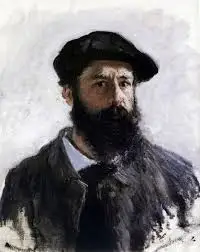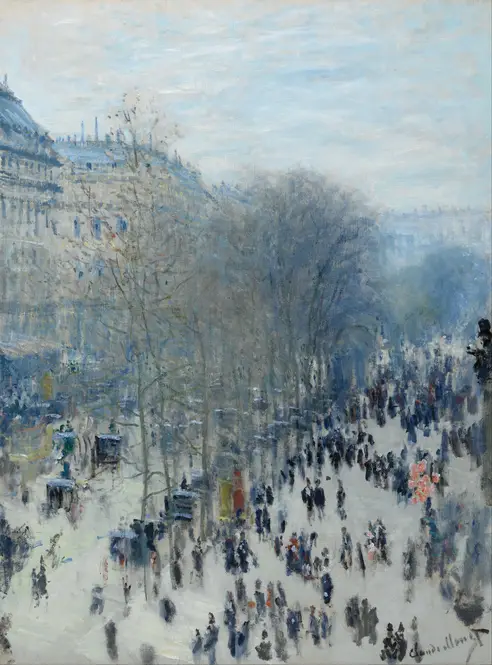Claude Monet’s *Soleil couchant sur la Seine à Lavacourt, effet d’hiver* captures the quiet beauty of a winter sunset along the Seine, where the fading light dances on the icy water. The painting is alive with subtle contrasts—warm oranges and pinks bleed into cool blues and purples, while the bare trees stand like delicate skeletons against the sky. Monet’s loose brushstrokes blur the line between reality and impression, making the scene feel both fleeting and eternal. Lavacourt, a village he often painted, becomes a dreamy backdrop where nature and human presence merge softly, as if the river itself is breathing.
What’s mesmerizing is how Monet turns winter’s harshness into something tender. The reflections on the water aren’t mirror-perfect but fractured, as if the Seine is shivering. A lone boat sits abandoned near the shore, hinting at life without overpowering the stillness. This isn’t just a landscape; it’s a mood, a moment where cold and warmth collide. The painting feels like a sigh—a quiet acknowledgment of time passing, light fading, and seasons shifting in ways only Monet could make so vivid.


-full.webp)
-full.webp)

-full.webp)
-full.webp)


-full.webp)